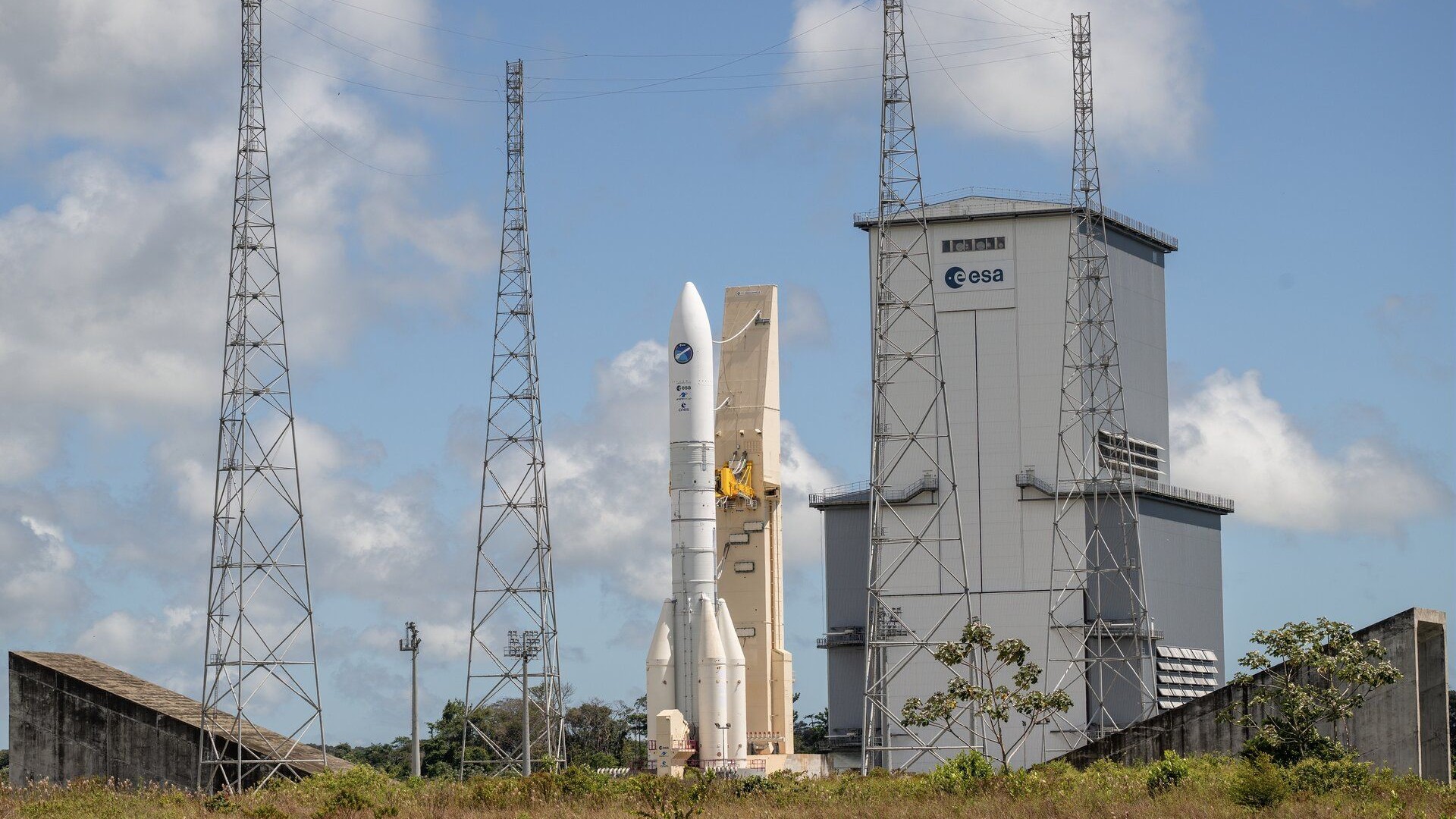Crucial test of Europe's long-delayed Ariane 6 rocket delayed
The debut launch of Europe's new rocket has already slipped into 2024.

Hotfire testing of the new Ariane 6 rocket has been delayed due to problems with ground equipment.
Test firing of the huge Ariane 6 rocket's core stage did not take place as planned on Aug. 29 at Europe's spaceport in Kourou, French Guiana, the European Space Agency announced via X (formerly known as Twitter) a day later.
The cause was a technical issue affecting the control system that governs the rocket's critical fluid operations, used for filling the launcher and the automated countdown. "Specialists are working on a solution. The next attempt is planned for 5 September 2023," the ESA post read.
Related: See Europe's powerful new Ariane 6 rocket on launch pad (photos)
The short hotfire test will see the rocket's Vulcain 2.1 engine fire for a matter of seconds. A longer test firing is planned for Sept. 26, despite the delay, while the rocket's upper stage will go through a third hot-firing test at the German aerospace agency DLR's technical center in Lampoldshausen on Sept. 1, according to an Aug. 9 ESA statement.
Ariane 6's short hot firing test at Europe’s Spaceport in Kourou, French Guiana, was postponed on 29 August 2023 due to a technical issue affecting the control bench governing the critical fluidic operations (the launcher’s filling and the automated countdown). Specialists are…August 30, 2023
Earlier this month the CEO of France-based company Arianespace confirmed that the inaugural launch of the new Ariane 6 heavy-lift rocket will slip into 2024.
Ariane 6 was initially planned to begin flying in 2020 and replace the aging Ariane 5. That rocket has since retired, launching for the final time in July. This, coupled with the grounding of the Vega C rocket following a failure last year, means Europe is currently without independent access to space.
Get the Space.com Newsletter
Breaking space news, the latest updates on rocket launches, skywatching events and more!
Join our Space Forums to keep talking space on the latest missions, night sky and more! And if you have a news tip, correction or comment, let us know at: community@space.com.

Andrew is a freelance space journalist with a focus on reporting on China's rapidly growing space sector. He began writing for Space.com in 2019 and writes for SpaceNews, IEEE Spectrum, National Geographic, Sky & Telescope, New Scientist and others. Andrew first caught the space bug when, as a youngster, he saw Voyager images of other worlds in our solar system for the first time. Away from space, Andrew enjoys trail running in the forests of Finland. You can follow him on Twitter @AJ_FI.








